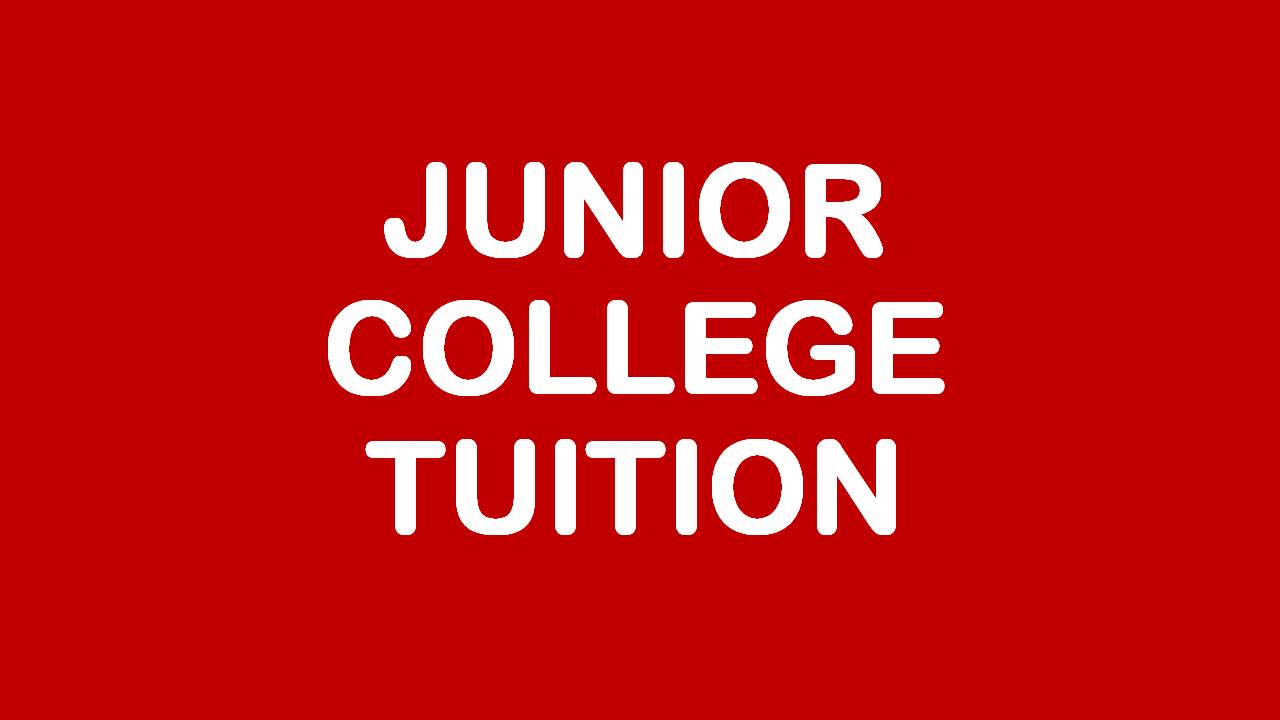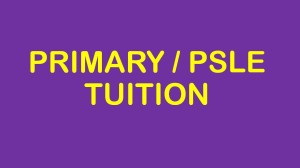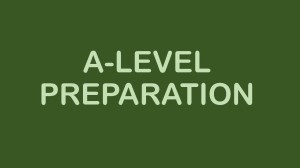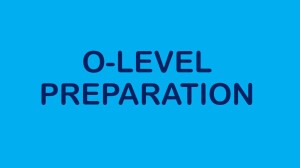| Name of School | PSLE Cut-Off Score |
| NANYANG GIRLS’ HIGH SCHOOL | 262 |
| RAFFLES GIRLS’ SCHOOL (SECONDARY) | 261 |
| RAFFLES INSTITUTION | 261 |
| HWA CHONG INSTITUTION | 258 |
| NATIONAL JUNIOR COLLEGE | 258 |
| DUNMAN HIGH SCHOOL | 256 |
| RIVER VALLEY HIGH SCHOOL | 254 |
| METHODIST GIRLS’ SCHOOL (SECONDARY) | 250 |
| CEDAR GIRLS’ SECONDARY SCHOOL | 249 |
| CHIJ ST. NICHOLAS GIRLS’ SCHOOL | 249 |
| CATHOLIC HIGH SCHOOL | 248 |
| SINGAPORE CHINESE GIRLS’ SCHOOL | 248 |
| ANGLO-CHINESE SCHOOL (INDEPENDENT) | 247 |
| VICTORIA SCHOOL | 247 |
| BUKIT PANJANG GOVT. HIGH SCHOOL | 244 |
| ANGLICAN HIGH SCHOOL | 243 |
| CRESCENT GIRLS’ SCHOOL | 243 |
| NAN HUA HIGH SCHOOL | 243 |
| ST. JOSEPH’S INSTITUTION | 242 |
| CHUNG CHENG HIGH SCHOOL (MAIN) | 237 |
Related Links:
LATEST! :
(A) List of ‘Top’ Secondary Schools (2013) in Singapore by Cut-Off PSLE aggregate score (2012)
(B) Post-PSLE Math Enrichment: Sec 1 Arithmetic & Algebra (24 Nov & 1 Dec)
(C) WHAT FACTORS TO CONSIDER WHEN CHOOSING A SECONDARY SCHOOL
(1) List of ‘Top’ Secondary Schools (2012) in Singapore by median PSLE aggregate score (2011)
(2) List of ‘Top’ Primary Schools (2012) based on GEP classes and Awards achieved.
(4) List of ‘Top’ Courses of Polytechnics (2012) in Singapore by net Cut-Off ELR2B2 aggregate
*To find out important details of a particular school, click on School Information Service.
If you are already in these schools, don’t be arrogant, don’t be complacent; you still need to study hard and intelligently. Good luck. : )
Ilyasa, M.Ed., PGDE, full-time tutor of Math & Physics (h/p: 97860411)
Related link: Beware the critical years in math education in Singapore …
_______________________________________
TUITION CLASSES:
_______________________________________________________________
EDUCATIONAL SERVICES:
______________________________________________________________
By EX-MOE TEACHERS & EXPERIENCED TUTORS
@ BLK 644, BUKIT BATOK CENTRAL, #01-68. S(650644).
CALL 65694897 OR SMS 98530744 OR 97860411.
List of ‘Top’ Secondary Schools (2012) in Singapore by Median PSLE aggregate score (2011) of their Sec 1 cohort
For our latest timetable, click here => 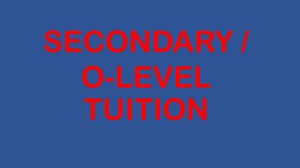
=============================================================
ORIGINAL POST (OUTDATED):
Related links:
O-LEVEL | SEC | PHYSICS TUITION
O-LEVEL | SEC | A. MATH TUITION
O-LEVEL | SEC 1-4 | MATH TUITION
O-LEVEL | SEC | CHEMISTRY TUITION
O-LEVEL | SEC 1-4 | ENGLISH TUITION
O-LEVEL | SEC 1-4 | MALAY LANGUAGE TUITION
———————————————————————————————————–
[I] = Independent; [A] = Autonomous; [SAP] = Special Assistance Plan; [IP] = Integrated Programme.
NAME OF SCHOOL (Median Aggregate Score available in 2011) [Type of School]
Nanyang Girls’ High (266)[I, SAP, IP]
Raffles Girls’ Sec (265)[I, IP]
Raffles Institution (264)[I, IP]
Hwa Chong Institution (261)[I, SAP, IP]
Dunman High (259)[A, SAP, IP]
National Junior College (259)[IP]
River Valley High (257)[A, SAP, IP]
Methodist Girls’ (254) [I,IP]
Cedar Girls’ Sec (253)[A, IP]
Catholic High (252)[IP, A, SAP]
CHIJ St. Nicholas Girls’ (252)[IP, A, SAP]
Anglo-Chinese (Independent) (252)[I, IP]
Singapore Chinese Girls’ (252)[I,IP]
Victoria (251)[A, IP]
Anderson Sec (248)[A]
Anglican High (247)[A, SAP]
Nan Hua High (247)[A, SAP]
Bukit Panjang Government High (247)[A]
Crescent Girls’ (246)[A]
St. Joseph’s Institution (245)[I,IP]
CHIJ Sec (Toa Payoh) (243)[A]
Chung Cheng High (Main) (241)[A, SAP]
Nan Chiau High (241)[SAP]
St. Margaret’s Sec (241) [A]
Tanjong Katong Girls’ (240)[A]
Xinmin Sec (240)[A]
Commonwealth Sec (239)[A]
Fairfield Methodist School (Secondary) (239) [A]
Yishun Town (239) [A]
Swiss Cottage Sec (238)
Related Links:
LATEST! :
(A) List of ‘Top’ Secondary Schools (2013) in Singapore by Cut-Off PSLE aggregate score (2012)
(B) Post-PSLE Math Enrichment: Sec 1 Arithmetic & Algebra (24 Nov & 1 Dec)
(C) WHAT FACTORS TO CONSIDER WHEN CHOOSING A SECONDARY SCHOOL
(1) List of ‘Top’ Secondary Schools (2012) in Singapore by cut-off PSLE aggregate score (2011)
(2) List of ‘Top’ Primary Schools (2012) based on GEP classes and Awards achieved.
(3) List of ‘Top’ Courses of Polytechnics (2012) in Singapore by net Cut-Off ELR2B2 aggregate
*To find out important details of a particular school, click on School Information Service.
If you are already in these schools, don’t be arrogant, don’t be complacent; you still need to study hard and intelligently. Good luck. : )
Ilyasa, M.Ed., PGDE, full-time tutor of Math & Physics (h/p: 97860411)
Related link: Beware the critical years in math education in Singapore …
List of Top (Academically Very Good) Secondary Schools in Singapore …
This is just my informed opinion.
[I] = Independent; [A] = Autonomous; [SAP] = Special Assistance Plan; [IP] = Integrated Programme.
NAME OF SCHOOL (GCE O-LEVEL BAND IN 2010) [Type of School]
Anderson Sec (1)[A]
Anglican High (1)[A, SAP]
Anglo-Chinese (Independent) (NA)[I, IP]
Bukit Panjang Government High (1)[A]
Catholic High (1)[A, SAP]
Cedar Girls’ Sec (1)[A, IP]
CHIJ Sec (Toa Payoh) (2)[A]
CHIJ St. Nicholas Girls’ (1)[A, SAP]
Chung Cheng High (Main) (2)[A, SAP]
Chung Cheng High (Yishun) (3)
Commonwealth Sec (3)[A]
Crescent Girls’ (1)[A]
Dunman High (NA)[A, SAP, IP]
Hwa Chong Institution (NA)[I, SAP, IP]
Maris Stella High (3)[A, SAP]
Methodist Girls’ (1) [I]
Nan Chiau High (2)[SAP]
Nan Hua High (2)[A, SAP]
Nanyang Girls’ High (NA)[I, SAP, IP]
National Junior College (NA)[IP]
Raffles Girls’ Sec (NA)[I, IP]
Raffles Institution (NA)[I, IP]
River Valley High (NA)[A, SAP, IP]
Singapore Chinese Girls’ (1)[I]
St. Joseph’s Institution (2)[I]
Swiss Cottage Sec (3)
Tanjong Katong Girls’ (2)[A]
Tanjong Katong Sec (2)[A]
Temasek Sec (3)[A]
Victoria (1)[A, IP]
Xinmin Sec (2)[A]
Zhonghua Sec (2)[A]
*To find out important details of a particular school, such as the median PSLE aggregate of it’s sec 1 cohort, click on School Information Service.
If you are already in these schools, don’t be arrogant, don’t be complacent; you still need to study hard and intelligently. Good luck. : )
Related articles/posts
(a) Beware the critical years in math education in Singapore.
(b) Not all IP students make it ….
(c) Sec 1 (2013) Algebra Headstart Programme in Nov/Dec for post-PSLE students
(d) List of ‘Top’ Secondary Schools in Singapore by median PSLE score (2011) of their Sec 1 cohort
Good Luck,
Mr Ilyasa, M.Ed., PGDE, full-time tutor (h/p: 97860411)
_______________________________________
TUITION CLASSES:
_______________________________________________________________
EDUCATIONAL SERVICES:
______________________________________________________________
By EX-MOE TEACHERS & EXPERIENCED TUTORS
@ BLK 644, BUKIT BATOK CENTRAL, #01-68. S(650644).
CALL 65694897 OR SMS 98530744 OR 97860411.
Is every school in Singapore a good school?
When we are talking about good schools, are we referring to the schools’ (1) teachers, (2) facilities, (3) programmes or (4) students?
If we are referring to just aspect (1), yes, I would agree that all schools here are good schools, in the sense that most of the teachers are qualified, experienced and dedicated to their profession.
But if we are talking about facilities and programmes, we know that some schools get more funding and more autonomy in deciding their curriculum. We can see with our own eyes that some school complexes are physically much bigger and in some schools nearly all or all of the classrooms are air-conditioned, which really makes learning more comfortable. We also know for sure that some schools provide more CCA options and have a greater variety of enrichment activities. So with respect to (2) and (3), it’s kind of a stretch to say that every school here is a “good” school.
Through the PSLE system and streaming, we have created elite schools and ‘neighbourhood’ schools. Do you think students in these two kinds of schools perform and behave in classrooms the same way? Many of my family members, in-laws and relatives are teachers or ex-teachers. We meet at least once a year, often sharing stories of what goes on in the schools. The result? Suffice to say that I will not send my children to certain schools. Because of this, it will be against my conscience to say that every school in Singapore is a good school.
It is a good and noble aim, to make every school in Singapore a good school. But to achieve results, it has to be done sincerely and with a strong will, because teachers, parents and students can see for themselves what actually happens in the schools. How schools are viewed by parents and prospective students cannot be changed by oral persuasion alone.
A new mission for schools …
“The 10 jobs projected to be the most in-demand jobs in 2010 did not even exist in 2004. Thus, the new mission of schools must be to prepare students to work at jobs that do not yet exist, creating ideas and solutions for products and problems that have not yet been identified, using technologies that have not yet been invented.”
– Prof. Linda Darling-Hammond, Charles E. Ducommun Professor of Education, Stanford University, in the Straits Times, Aug 26 2009, p. A12.
PAVED WITH GOOD INTENTIONS (by Colin Goh & Joyceln Woo)
PAVED WITH GOOD INTENTIONS:
How living in New York has illuminated for us the difference between the Singaporean Dream and the Singaporean Plan
By Colin Goh & Joyceln Woo Yen Yen
Former lawyer turned writer/cartoonist Colin Goh and educator Joyceln Woo are married and have been living in New York for the past three years.
COLIN & JOYCELN: We fell in love and in June 1998, we got married – true Singaporean style. The studio photography, the clothes, church, the dinner and the hundred of guests that we had never met before. What happened to us after that was not so typically Singaporean. Here are our stories.
JOYCELN: As a child, I could never sleep the night before the first day of school. The night before my first day of teaching was no different. I didn’t know what to expect but I knew that I was going to help kids learn, be the best teacher, and make a difference.
At my first staff meeting, the principal screened an image familiar to all new schoolteachers – the Prism. Like a magical crystal ball, the Prism told many things. It could predict how well students entering secondary school with 4 subjects at PSLE would do for the ‘O’ levels. With the Prism, we could evaluate each student’s potential grade in literature based on his/her PSLE grades and then tell if our school had “added value” to the child’s education.
Looking into the Prism, the principal announced that while she was concerned about the various aspects of development – Intellectual, Aesthetic, Moral, and Physical – “This year, our school will focus on the Intellectual.” By this, she meant that as teachers, we should all ensure that we stretched the potential of the students so that they performed “better than expected” at the ‘O’ levels. I noticed in the subsequent years that we never decided to focus on any other aspect of development. There was never an Aesthetic, Moral or Physical year.
The conversations in the staff room educated me considerably about the concerns of teachers.
“Oh, I heard you bought the new condo in Bukit Batok, that’s a good investment…”
“So which piano school are you sending your child to now?”
“Do you want to go buy diamonds with us, we are going to buy diamonds this afternoon.”
In my naïveté, this came as a shock. Why weren’t teachers talking about helping students learn or improving instruction?
And when they WERE talking about improving instruction, it was invariably:
“So what questions do you think will come out for this year’s ‘O’ levels?”
“Yes! Yes! I spotted the right questions!”
“You have to make sure your students write 5 ‘compositions’ and do 5 ‘comprehensions’ this semester.”
And when questions were asked, the answer was inevitably “Can’t change. That’s what the principal wants to see.”
The culture in the staff room was a mix of different groups:
· the Tai-Tais, women who had married well-off husbands, and who admired, respected and competed with each other for their Ferragamo shoes and Louis Vuitton bags.
· the few unmarried men who were mothered by the Tai-Tais as they were regarded as “good” men (i.e. hardworking and honest) but ironically insufficiently compelling marriage material (for why on earth would a functioning, virile, desirable man become a teacher?).
· the married men who usually lived in HDB flats (unlike the Tai-Tais and their non-teacher husbands), who generally kept to themselves.
· the older single women who were diligent in ensuring that all forms are handed in on time and helping students who need extra help get the preferred grades. They were usually more conservatively (and cheaply) dressed, and did not generally interact socially with the Tai-Tais.
· the expatriate teachers who were generally avoided by the other teachers and not expected to do very much because they either could not be trusted to do the work, were too difficult to communicate with, or were too troublesome to work with. And when they got together, they made plain their disdain for Singapore and its school system of which they were a part. Stereotypical as it may sound, those I’d met had invariably come to Singapore either to heal from a broken marriage (in which case, getting involved with a local woman usually came with the package), or had fled an unsuccessful career so they could return home and say, “I spent a few years in the Orient.”
· And the young teachers, bright-eyed and bushytailed, who believed they could make a difference, and who usually started out immensely popular with the students. They organized extra activities which they were not required to do, sat with students for long hours when they had problems, and generally tried to innovate with teaching. The Tai-Tais usually tried to matchmake the young single female teachers with single men they knew, but never the single male teachers. Seasoned teachers generally sat back and placed bets on when the neophytes would eventually burn out.
I didn’t know a single lazy teacher – everyone was extremely hardworking, taking work home, often physically running around as they hurried to different parts of the school. The teachers hardly had time to rest and reflect. It was as if we had been trained to work hard, but not to think.
What unites Secondary 4 teachers is the common goal of ensuring their students score well in the ‘O’ levels – preferably better in the subject that they teach rather than in another subject. Success is defined largely in terms of how many As produced in their class.
I remember one year distinctly – the school had done well in history and the Sec 4 history teacher was jumping up and down in glee, like she had won a war. On the other hand, the students hadn’t done as well in literature and the teacher was walking around with her head down, wishing that the bulletin board with the results didn’t place the teacher’s name next to the results of each class. While everyone congratulated the history teacher on doing well in spotting the right questions, we all didn’t know what to say to the literature teacher. We sort of patted her shoulder as if someone had died.
And for non-Sec 4 teachers, our overriding concern was assigning the required number of tests and exercises and grading them. Each semester, all our students had to submit binders containing their completed and graded assignments. And each semester, the teachers would spend several days of class time ensuring that the students had everything in place, as the submission of completed binders were a factor in a teacher’s evaluation. The binders would disappear for months because it would take the Head of Department that long to go through the binders and count how many assignments had been completed. It didn’t seem to matter if the teacher had taken 5 minutes to grade each composition or 30 minutes to make sure that the students received meaningful feedback. What was important was that the assignments were there.
I felt both angry and guilty that my idealism constantly came up against so many artificial obstacles. I felt that the obsession with bookkeeping and papering over any mistakes, real or perceived, allowed neither time nor space for innovation. Further, the mania to deliver standardized results trumped the notion of harnessing individual potential, of the teachers and the students.
Worse, I felt I could not raise these issues. There was a culture of silence.
My experiences are not about bad principals or teachers in particular. It is about ways of being and seeing that represent to me, the Singapore legacy that I have inherited. The principals and teachers that I talked about are not to blame individually – it is just so difficult to be and to see otherwise in the busy-ness, routines, and duties of our everyday lives.
I decided to leave to pursue graduate studies. Teacher education in Singapore is tilted more to the vocational than the intellectual and I wanted the space, time and knowledge to help me articulate and frame what I was thinking and feeling. On a more pragmatic level, I knew that nobody took the feelings of groundling teachers seriously and that people would probably listen to me more if I had a doctorate. I was disappointed, but still hopeful.
COLIN: I remember my first visit to New York. I had just graduated in law from University College London, and had several months before I was scheduled to take the English bar exams. Where most of my friends had chosen to do attachments with Singaporean law firms with the prudent aim of acclimatizing themselves with the career-to-come, I was paralysed with a single, terrible thought: “These are the last few months I’ll ever have to indulge my youthful passions.”
In an impulsive moment, and much to my parents’ annoyance, I blew every last cent I had and wangled myself a place in a cartooning course at Manhattan’s School of Visual Art. I had been cartooning for The New Paper for several years by then (my comic strip The Concrete Jungle continues to run in their august pages), but had no formal training.
I chose Manhattan because it was supposed to be the cynosure of the creative world, and most important of all, where Marvel and DC Comics had their headquarters. Where else would one study cartooning but in Spiderman’s territory?
Those few months were the most mind-blowing of my life. By day, I was either sequestered in a musty studio sketching Brazilian women or wandering the varied New York neighbourhoods. By night, I hung out with the other residents of the international hostel I was staying at – a diverse crowd of students from Argentina to Kazakhstan and everywhere in between. I had always thought Singapore to be a model of diversity and cosmopolitan progress, but over countless milkshake-fueled discussions in East Village hangouts, I felt like the proverbial mountain tortoise.
It was also the first time I began to question the path I was about to take. I was meeting people who were taking chances and simply following the dictates of their passion, whether it was art, dance or securities.
I had studied law largely because it was often cited it as the next best thing after medicine, which I knew I’d be awful at. Besides, SM Lee was a lawyer. What better endorsement could a Singaporean have? Despite being a published cartoonist and writer by then, I never thought about a career in the arts. It was a completely nonexistent option.
What was worse was that my parents never forced me into law. I just read their minds, I guess. Besides, all my friends seemed to be doing it too. It was the Singaporean Dream.
I also remember in my first year in law school, my parents telling me about SM Lee’s now seminal “If I were an undergraduate” speech, where he told JC students that were he a student now, he would not study law; he would be an engineer, join the civil service, then obtain an MBA and thereafter enter the private sector. SM Lee had switched from Coke to Pepsi. There was a New Dream.
For a moment, I thought, well, if I’m yesterday’s man, I might as well deviate from the path altogether. However, that year, the Singapore government decided it had too many lawyers and restricted the number of recognized overseas law schools. A rumour began spreading amongst the legal undergrad community that it wouldn’t be long before they didn’t recognize British qualifications altogether. We had to hurry and enter the Singapore workforce as soon as possible, before we were shut out. (As we now know, the rumour was unfounded, and Singapore now admits it needs more lawyers.)
Nevertheless, out of prudence, I shelved any thought of changing fields and became a barrister, then an advocate and solicitor of the Supreme Court of Singapore.
I joined a large law firm, again largely because it was commonly believed that it was good to bloody oneself in the trenches of the giants. I practiced shipping law, again an extremely prudent choice, what with our being the world’s busiest port. Further, it was perceived as exciting because shipping lawyers often had to go out to sea to arrest ships. (In truth, arresting ships is not vastly different from what loansharks do when they hang pig’s heads on debtors’ doors.)
I had a decent, almost enviable, income. I had to keep telling myself that, because the lifestyle was neither decent nor enviable.
Clients called me at 2 am in the morning. The High Court Registry nicknamed me “Mr. 5 O’Clock” because I regularly filed papers right under the guillotine, never of my own volition. My only pleasure was catching up on industry gossip while waiting in line to argue before the court registrars. There was not a single Chinese New Year holiday where I would not find myself in the office. My parents only caught fleeting glimpses of me early in the morning when I rushed to work, or late at night, when I stumbled in, surly and mentally exhausted. I saw Joyceln, then simply my girlfriend, for a few precious, stolen hours on Sundays.
But I had the job, and more important, the income. They brought me a measure of social acceptability. Parents’ friends would nod approvingly, non-lawyer friends would remark how much lower their salaries were. I made enough to afford membership in a club I never had time to step into, and for season parking in town. I had credit cards and designer ties. I could share war stories about work that might have seemed glamourous to non-lawyer friends, weaned as they were on a diet of Ally McBeal. I was in the secure embrace of the Singaporean Dream.
My epiphany came as I was descending the gangway of a very large oil tanker. At a height of ten storeys or more, the gangway abruptly slipped its moorings and fell several feet. I found myself in mid air for several terrifying seconds. Luckily the crew managed to secure it again. As I retrieved my dropped manhood, I saw bits of the vessel fall into the sea below. If I had not held tight to the chains, I would be dead.
When I told my colleagues about it, no one batted an eyelid. It was simply one of the hazards of the job, like the long hours and the symbolic fellating of clients. Some even quipped, “Who says law isn’t exciting?” But working late that night in the stale air of my office, surrounded by musty documents and lit by the sickly iridescence of my computer monitor, I knew I had to get out.
My brush with death made me reflect on my life, as I suppose all encounters with the reaper must do. I realized I was unhappy. Not weeping-and-gnashing-of-teeth unhappy, just that dull ache of uninspiration. Yet, on paper, I should have been completely content.
My conviction was reinforced when I passed my boss’s office and saw her toiling away. Much more senior, she was still keeping the crazy hours of a junior lawyer. She had a brilliant mind, equity in a giant and prestigious firm and a sizeable income, but I realized that I didn’t aspire to her lifestyle. And she was by no means unique. If I did not aspire to be my boss, then what was the point? My life stretched before my eyes, and I did not want to take another step in its direction.
I then made a classic Singaporean evaluation: if I’m going to suffer, then by god, I’ll suffer for more money. I figured American lawyers make the most money, so that’s where I’ll go. I decided the fastest way to do this would be to do a one year Master’s degree, preferably in an Ivy League university, since it would provide me ingress into the American market.
I spoke to Joyceln, and told her that the only place I wanted to go was New York, because I wanted to recapture a little of that energy I had felt years ago. Despite some reservations (New York has a not wholly undeserved reputation), we both applied to Columbia University, New York’s only Ivy League university. Miraculously, we were both accepted.
We quit our jobs, got married, emptied our bank accounts and left immediately.
JOYCELN: When applying to do my doctorate at Columbia’s famous Teachers College, I spoke to several professors at the only education institution in Singapore to find out about possible financial support. I had intended to study curriculum and technology, and felt my experience teaching as well as a stint designing educational software in an IT firm would be valuable.
However, the door was abruptly slammed in my face when I was told over the phone, “If you are not in computer science, and not a first class graduate, there is nothing we need to talk about.”
Perhaps spurred by anger, I worked like a demon at Teachers College and earned several academic awards, including a doctoral research fellowship which covered both tuition and a stipend, and came unencumbered by any bond, moral or otherwise. The myopia with which I had been treated had ironically turned out to be a blessing.
I even met with our Education Minister when he visited Teachers College. Of the questions he asked me, two stood out: “When are you going back to Singapore?” and “When are you going to have babies?” It hit me that I had never spoken to the Minister when I was teaching in Singapore. I wondered: am I valuable to the country only after I leave?
COLIN: Armed with a Masters from Columbia Law School and the grandiose title of “Harlan Fiske Stone Scholar” which Columbia had over-generously bestowed upon me, and having passed the New York bar exams, I knocked on the doors of some of the largest law firms in the world.
I recall one battery of interviews being carried out in a large hotel, where prospective lawyers would shuttle in and out of the rooms, each occupied by interviewers from the firms.
A fellow prospector asked me, “Which other profession requires you to shuttle from hotel room to hotel room?”
“Prostitution,” I remarked, and we both laughed.
It proved a prophetic statement, for when touring the offices of prospective firms, instead of feeling pumped, I felt horrified by the all-too familiar office layout, the mounds of paper spilling onto the floor, the designer suits thrown over the backs of chairs.
The last straw came when a partner of one Midtown firm patted me on the back and said, “I think you’d be perfect to help work on our port project out in Saudi Arabia!”
It suddenly hit me that I was not embarking on real change at all. I was merely rearranging the furniture. Like a good little boy, I had made all the pragmatic, sensible decisions… and it was about to push me into the abyss. I was still trying to achieve the Singaporean Dream, except overseas, and on a larger scale. Well, not exactly…
It was then that I understood the difference between the Singaporean Dream and the Singaporean Plan. And what is the difference?
I suppose the Dream has to be one of searching for peace and the liberty to conduct one’s life as one sees fit.
That’s probably what my ancestors sought when they left China: the governments of the Ming and Manchu were ruthlessly restrictive of cross-border commerce, the lifeblood of my ethnic Hokkien and Teochew forbears.
And no doubt it was the Dream, fueled by hard work and courage, that has made Singapore the indisputable commercial success it is today. And our story is a wonderful one: the Little Island That Could.
However, invariably once people attain success, they start to canonize the steps they took to achievement. This is how Dreams become Plans, and how one hegemony replaces another: the search for peace and liberty becomes get into a good school, then a good university, then a stable job, then buy property and stock. The problem is, then what?
There is nothing inherently unique about the Singaporean Dream. The American Dream of life, liberty and the pursuit of happiness is substantially the same. (And especially in the upper middle class, the American Dream is fast becoming a Plan too: prep school, Ivy League, Wall Street.)
But what to me gives America more hope is that they still celebrate mavericks; they may never find happiness, but their liberty to pursue it is sacred.
My experience in Singapore was, however, very different. There were always people telling you what and how you should do things, and imposing penalties for deviation. There were ‘right’ schools, ‘right’ professions, ‘right’ strategies.
Of course there are those who would argue that ultimately, the choice is one’s own and that there is nothing to prevent one from doing what he or she wants in Singapore. After all, isn’t it one’s fault for caving in to peer pressure? I would humbly submit that while theoretically true, such an argument betrays an ignorance of the combined workings of hegemony and power.
The issue is how expansive the reigning ideology is. In Singapore, the dominant view is to do whatever works (whatever that may be, and regardless of who it worked for). In New York (I won’t pretend that America is homogeneous), the prevailing view is that everyone should find what makes him or herself unique, and capitalize on that.
Manhattan is smaller than Singapore, yet there is space for both Wall Street Wizards and Alphabet City Shamans to coexist. Despite occasional border skirmishes, there is recognition that the city would be a lot poorer if everyone marched to the same drum.
An overly romantic myth? Perhaps. But that such a myth could persist in a hostile and cynical environment like New York, was encouraging to me. And anyway, the ‘fulfillment’ promised by the Singapore Plan was equally illusory. In a competition of myths, I chose the one that gave the most latitude to one’s passions over the one that indulged one’s fears.
JOYCELN: I think the most striking thing about New York is that so many people here are in transition. They don’t know where they are going to be or what they are going to be doing in 6 months’ time. But they are all working towards their individual dreams, in their own individual way, and not according to some mandated blueprint or destination.
The receptionist in my building is also an actor. I recently met a waitress who was a graduate student in philosophy. I have classmates who are not only still at work, but who also shoot films whenever they can.
Until New York, I didn’t know I could be poor and still volunteer to help others who are more needy than me – not tomorrow, or next year, or when my income reaches a certain level, but today.
I now tutor the children in my neighborhood who need help but can’t afford to pay. I didn’t know how great it feels to be able to write, and express my anger, worries, and joys. I didn’t know that if I am dissatisfied by policies, I can get together with others to express it.
Just last week, there was a public school that was boycotting a state-mandated test because the test was taking away precious instructional time. What a novel idea! I didn’t know I was not alone, that there are other Singaporeans who think like I do, who want to make a difference but who are afraid and are so used to being silent.
COLIN: The insidiousness is this: in adhering to the Singaporean Plan, I was acting pragmatically, but ultimately, dishonestly.
As late as the interlude between pupilage and practice, I had written a play that was performed for the Singapore Arts Festival Fringe, for which the British Council had sponsored me to attend the Royal Court Theatre in London’s prestigious theatre school. Further, throughout my years of practice, I also managed to continue cartooning The Concrete Jungle. While I enjoyed writing and drawing, never for a second did I think this might be a career. Worse, I felt compelled to downgrade their importance in my life. First was money, then pleasure. It was simply un-Singaporean to think one could get pleasure without money, or that working should be pleasurable.
But now I refuse to postpone my dreams any further, and shelve them under some misguided notion of pragmatism. How often was I told as a child by my elders, “wait till you grow up,” “wait till after exams”, “wait till after you graduate”. I do not desire to wait until I retire. I might not make it that far. I refuse to be a walking mid-life crisis in the making.
But living one’s dreams is difficult because it is a lone undertaking. There is no such thing as shared dreams; they are personal creatures. And while my peers are making partner and buying cars, I live in rented student accommodation and scatter my work to the ocean of publications, hoping for a bite. Thus far, I have only been published a couple of times, far from being enough to pay the rent. Yet I do not feel despair. Trite as it may sound, I recognize that life is about the journey, and not the destination.
JOYCELN: In Singapore, a considerable amount of talk in education has been about continuing to be competitive in the global marketplace. Singapore seems to have done well in this respect – we have consistently come in first in the International Math and Science Study.
But in tandem with the fear of losing out on notional global competitiveness is the willingness of many educators, policy-makers, and parents to “train” the young to delay their dreams, desires and play for a future goal, to “wait till after you finish your homework,” to “wait till after the exams” while at the same time plying them with material bribes.
On the global front, it is ironic that the US is trying to emphasize academic standards while Japan, who also finished in the top ranks of the International Math and Science Study, is trying to cut down on the curriculum to allow more time for play. Both cite global competitiveness as their reason for doing so. One wonders as a country, whether we are listening to the everyday experiences of our own children, parents and teachers, or simply responding to some speculative construction of what is needed to be competitive.
Can anyone say for sure what’s needed? Only a few months ago, countries cried out for schools to produce more dotcommers. A look at the rollercoaster line that is the NASDAQ should be cause for circumspection.
There are signs that children in Singapore are straining under this ethos. Recent newspapers reports have reported that parents are spending an inordinate amount of money and time to send their children for after-school tuition so that they can achieve better results; scoring high marks in tests and exams have been found to be a top concern for students; the average 10 year-old has been found to spend 6 hours in school and up to 8 hours on homework and tuition each day, and, students have been reported to experience physical reactions such as diarrhoea and asthma attacks during or just before exams. Is this education, or child labor? Has scoring well in tests become the reason for tests themselves? How do teachers, parents, and teachers begin to imagine our lives differently?
COLIN: I think it is important not to wholly discredit the Singapore Plan. It worked for some and may yet work for others. However, it is also true that the road to hell is paved with good intentions and that it is always an error to confuse what is with what ought to be.
JOYCELN: Consider these 2 stories. Which is closer to yours?
You wake up everyday and work from Monday to Friday, and often, Saturday too. If you finish work early, you and your partner go to your parents’ place for dinner and see your child for a few hours. If you work late, you buy a packet of char kway teow from the hawker centre but eat it at home because it’s too warm to eat there. You’re not crazy about the job but you know that if you keep at it, you can afford a car in 3 years’ time, and in 5 years’ time, buy a condo close to the primary school you want to send your kid to. Your conversations with people are either for the purpose of networking, work, or for familial obligations you cannot avoid. On weekends, you play golf with your friends at your country club or watch a movie with your partner. Once a year, you go on a ten day vacation to New York, London, or Paris, and when your children are big enough, Disneyland.
Alternatively, you wake up and you have no idea what is going to happen today, tomorrow, 6 months or a year later. Ironically, because of this uncertainty, all possibilities exist for you. You can be the Prime Minister of Singapore, you can make a movie, you can cook a meal you have never cooked before, eat at a place you have never eaten before, you can color your hair red, you can skip instead of walk, you can volunteer at the school you have always wanted to volunteer at, you can write a book, or you can have a baby even though you don’t have a maid. You have conversations with people who set your heart palpitating and your mind on fire. Your weekday is not so different from your weekend because everyday you are thinking, creating, and more important, imagining.
Most of us recognize the first story and its pursuit of the 5 Cs of “cash, condo, car, country club, credit card.” It is the Plan, which imposes a conclusion on you, and you work in order to make all the pieces fit. A bus stop advertisement I saw recently said it best: “We spend all our youth chasing money, and when we attain it, we spend all our money chasing youth.”
A Dream, on the other hand, carries you on its wings to worlds that your heart and mind have never known.
COLIN: My fault was accepting that the Plan would naturally work for me. One doesn’t have to accept a legacy one inherits. I was complicit in my unhappiness. I did not question enough, whether it was my elders, the government, newspapers, consultants, whatever. I foolishly let others make up my mind for me. I rather fear I am not alone in this folly.
If there is any blame to be laid, it is the upholding of a compliant, unquestioning culture; that some people should never be challenged because of age, status or whatever. It is not solely the establishment’s fault; all political parties are entitled to play politics. But it is wholly our fault for not fighting for what we believe in.
COLIN & JOYCELN: Criticism and disagreement is not treason, and our words emanate as much from our dissatisfaction with, as our love for Singapore. We simply believe that we are more than our legacy. This is the dream of immigrants everywhere, whether they arrive in Singapore or on Ellis Island.
_______________________________________
TUITION CLASSES:
_______________________________________________________________
EDUCATIONAL SERVICES:
______________________________________________________________
By EX-MOE TEACHERS & EXPERIENCED TUTORS
@ BLK 644, BUKIT BATOK CENTRAL, #01-68. S(650644).
CALL 65694897 OR SMS 98530744 OR 97860411.
A different kind of school …
I have been doing relief teaching this week in a school where every student has a macbook and their textbooks are all stored in their macbooks. So they only bring one ultra light laptop to school instead of a stack of textbooks. They answer the e-book questions in their e-journals and draw graphs using software. At the same time, they are able to access the internet for more info to do their classroom projects. Every morning, because i’m a relief teacher, i have to borrow a macbook from the IT dept to take class attendance and to show science videos on the internet. I don’t go from classroom to classroom to teach Science; I sit in a dedicated Science lab surrounded by scientific apparatus and prepare for students to arrive. And these students are not college students; they are just 12 to 13 year-olds.
Wouldn’t it be great if every school in Singapore is like this, where teachers have dedicated subject rooms and technology is heavily utilised, from primary schools to junior colleges? All schools, instead of just some elite independent schools? Students sit around me instead of facing me. Students sit in groups facing one another instead of sitting individually facing the whiteboard. All classrooms are air-conditioned for comfort and the class sizes are between 20 to 24 (it seems that the school believes that every child is Gifted).
_______________________________________
TUITION CLASSES:
_______________________________________________________________
EDUCATIONAL SERVICES:
______________________________________________________________
By EX-MOE TEACHERS & EXPERIENCED TUTORS
@ BLK 644, BUKIT BATOK CENTRAL, #01-68. S(650644).
CALL 65694897 OR SMS 98530744 OR 97860411.
Direct School Admission (DSA) to Sec Schools …
TUITION CLASSES:
_______________________________________________________________
EDUCATIONAL SERVICES:
______________________________________________________________
By EX-MOE TEACHERS & EXPERIENCED TUTORS
@ BLK 644, BUKIT BATOK CENTRAL, #01-68. S(650644).
CALL 65694897 OR SMS 98530744 OR 97860411.
=============================================================
ORIGINAL POST (OUTDATED):
According to the MOE, “The Direct School Admission (DSA) Exercise aims to promote holistic education by giving participating schools greater flexibility in selecting students while holding to the key principles of transparency and meritocracy. For students, the DSA provides them the opportunity to demostrate a more diverse range of achievements and talents in seeking admission to secondary schools.”
The 2012 DSA-Sec Exercise will be conducted in 3 stages from 25 June 2012 to late Nov 2012.
For more information on the DSA-Sec, click here to visit MOE’s website on DSA.
List of Secondary Schools Participating in 2012 DSA-Sec Exercise —for Admission to Secondary One in 2013: click here.
There’s no such thing as a ‘Top’ Primary School …
Yes, there’s no such thing as a ‘top’ primary school, for the simple reason that entry into pri schools is not based on some kind of entrance exam or placement test. So not surprisingly, a student from RGPS can end up in a normal stream of a ‘neighbourhood’ sec school.
I’ve tutored weak math sec students who came from ‘brand name’ primary schs. They are no different from students who come from almost-unheard-of pri schools. In fact, even some students from IP schools are not as academically as good as those from ‘neighbourhood’ schools. The former just happen to be early bloomers.
However, there IS such a thing as a “rich-kids’ primary school”, which arises because the neighbourhood in which the sch is situated consists of mainly landed properties or condos. Well, if you are the kind who feels better only if you mix with people of the same social status as you are, then go to such schools and I wish you all the best in life.
And, there IS such a thing as a primary school with good teachers. You have to seek out such schools if your child is not an independent learner. But please bear in mind that good teachers do move around or get posted elsewhere or ironically get promoted to a non-teaching post.
A good school is one that adds value to your child.
If you think about it deeply, the notion of a ‘top school’ is problematic. Is a school that attracts top students a good school? Bear in mind that teachers in such schools may teach too fast and expect a lot from students yet do minimal teaching work. Is a school that produces good results in national exams a good school? Well, of course a sch that takes in bright students tend to produce above-average results; it’s something expected, and not something necessarily due to the extraordinary skills of the teachers or some kind of super learning programme (I studied in RI and RJC, so I can say a bit about the kinds of teachers back then).
So do all these mean that a primary school that consistently produces good PSLE results is a good school, since pri schools do not admit their pri 1 students based on results? From a pragmatic Singaporean point of view, or from a pure academic one, yes. So is there a primary school in Singapore that produces admirable PSLE results for MOST of its students year after year, and not just for its GEP students (if any)?
Please bear in mind that the primary schools with GEP students are not themselves the ones who produce the gifted students. The gifted students are first identified through a national selection test and then posted to those primary schools with GEP classes.
_______________________________________
TUITION CLASSES:
_______________________________________________________________
EDUCATIONAL SERVICES:
______________________________________________________________
By EX-MOE TEACHERS & EXPERIENCED TUTORS
@ BLK 644, BUKIT BATOK CENTRAL, #01-68. S(650644).
CALL 65694897 OR SMS 98530744 OR 97860411.
Just finished Sec 4 IP Math and Physics tuition…
Sunday mornings are very tiring for me – 2 hrs of Sec 4 IP Math followed by 1.5 hrs of Sec 4 Pure Physics tutoring. The topics we are doing now are Trigonometry, Differentiation and DC Circuits.
Apparently, some schools are slower than others. Sec 4 students should now already be doing Differentiation and DC Circuits, but some are still at graphs of trigonometrical functions and electrostatics or even sound!
Every year, my tuition students who are weak in Math come from two ‘very good’ schools in the west. I shall not name the schools but I think the lower sec Math teachers in these schools need to get closer supervision from their superiors. This is what I have been trying to tell parents – ‘good’ schools do not necessarily have good teachers. Some of these schools attain good results because their students are academically good in the first place, not because they have outstanding teachers. If you enter a ‘good’ school, chances are, the teachers there think you are already very smart, so they teach fast and make you do a lot of ‘independent’ learning, and justifying these actions using the ‘Teach Less Learn More’ philosophy.
Last but not least, I’ve said this before and I’ll say it again: SEC 2 MATH IS VERY IMPORTANT, ESPECIALLY THE ALGEBRA PART.
For our latest timetable, click here =>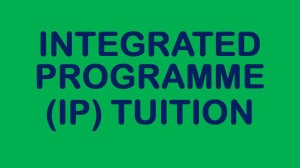
______________________________________________________________
